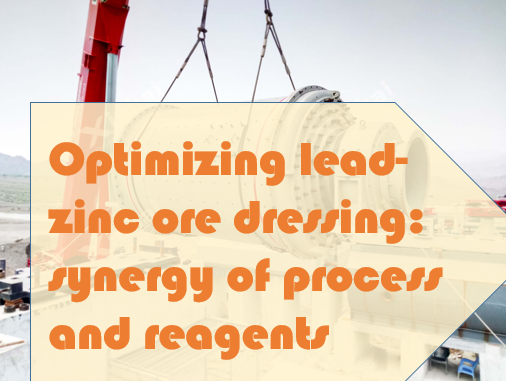Optimizing lead-zinc ore dressing: synergy of process and reagents
2024-08-29 Xinhai (1513)
2024-08-29 Xinhai (1513)
If you have any questions, please contact us through the following ways, we will give you more and better assistance!

The beneficiation process of lead-zinc ore is a complex technical activity, which not only depends on the mineral composition and content of the ore itself, but also is affected by the particle size, structure and other characteristics of the mineral. In the beneficiation process, in addition to recovering lead-zinc sulfide minerals, it is also necessary to consider how to effectively recover the beneficial elements such as gold, silver, copper, and sulfur associated with the ore. The determination of the beneficiation process requires comprehensive consideration of the recovery and separation of minerals, which increases the complexity of the process.
Traditionally, the flotation of lead-zinc sulfide minerals follows several principle processes, including sequential priority flotation, mixed-separation flotation, equal flotation and branch flotation. The following is a brief introduction to these processes:
Direct priority flotation process: suitable for ores with high ore grade and relatively simple mineral composition. First, sphalerite is suppressed by adding inhibitors, then lead sulfide minerals are floated, and finally zinc sulfide minerals are activated and floated. If there are pyrite minerals, corresponding suppression and flotation are also required.

Mixed selection-separation flotation process: First, mixed flotation of lead and zinc minerals is carried out to obtain mixed concentrates, and then lead and zinc are separated by suppressing zinc and floating lead. This method is suitable for ores with low lead and zinc mineral content or similar floatability.
Equal floatability process: Lead and zinc minerals with similar floatability are floated together, and then lead concentrate and zinc concentrate are separated. It is suitable for ores with large differences in sphalerite floatability.
Asynchronous flotation process: Fast-floating and easy-floating lead and zinc minerals are separated from slow-floating and difficult-floating minerals, which is suitable for ores containing sulfide lead and zinc minerals with large differences in floatability.
Flotation process of lead-zinc ore with high sulfur content: For ores with more pyrite, different process flows are adopted, such as lead-sulfur mixed selection/separation-zinc reselection process, or stage grinding stage flotation process.
In these processes, lime, zinc sulfate, sodium sulfite, sodium carbonate, etc. are usually used as inhibitors, ethyl xanthate, ethyl thiocyanate, etc. are used as collectors, and pine oil, 730A, etc. are used as frothers. Copper sulfate is often used to activate zinc sulfide minerals. The desulfurization process may involve sodium sulfide desorption, activated carbon desorption, or through concentration, filtration and re-grinding.
Each process has its advantages and limitations. For example, direct preferential flotation can obtain high-grade concentrate, but the process is long and the equipment configuration is complex. Mixed selection-separation flotation can reduce the volume and quantity of equipment, reduce investment and cost, but the concentrate quality may not be high. Although the isofloatable process and asynchronous flotation process are effective in some cases, they are rarely used in actual production due to complex processes or poor adaptability.
In general, the beneficiation process of lead-zinc ore needs to be customized according to the specific characteristics of the ore and the elements to be recovered to achieve the best recovery rate and economic benefits.